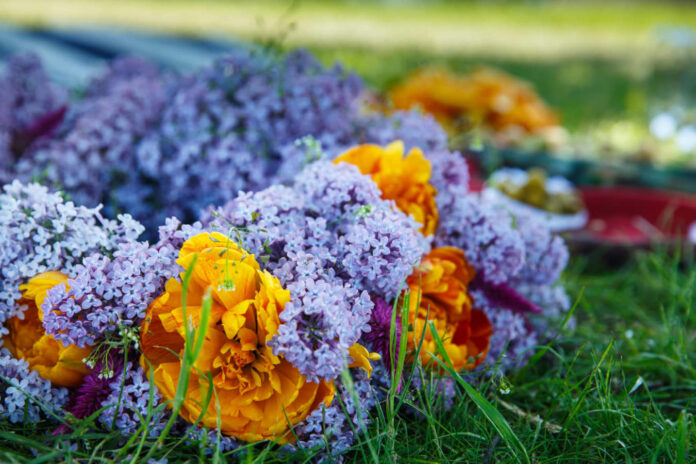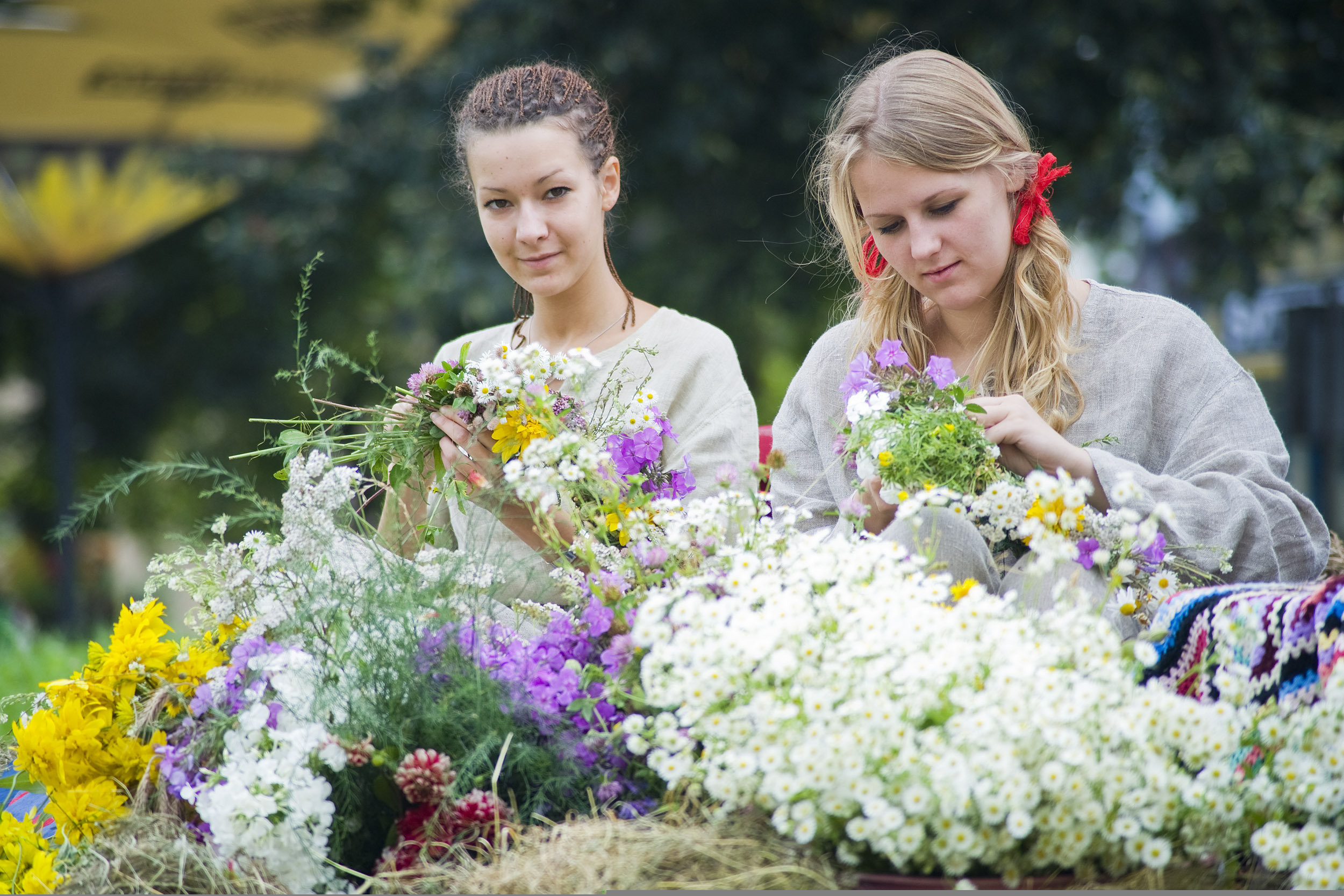
The late Christianization of Lithuania failed to completely eradicate traces of paganism. Some holidays still have two alternative names – one Christian and one pagan. These are the Joninės-Rasos (Saint John’s Eve, coinciding with the year’s longest day in June 23rd) and the Assumption of Mary, or Žolinė (August 15th). The religious holiday is celebrated in many countries in Europe.
Žolinė is a holiday where summer meets fall and it has been celebrated in Lithuania since ancient times. The middle of August is a time when the most important outdoor chores are done: crops are cut and distributed, berries and fruits are collected. At the same time, it is also a farewell to blossoming plants and flowers. Traditionally, on this day, women would pick the most beautiful flowers and herbs, and would thank the Earth for its plentiful harvest. Farmers would bake fresh bread, make beer and kvass (gira). To prevent illness, families would eat vegetables blessed by a priest and feed their animals with them as well. Families and relatives would come together to celebrate Žolinė, and honour the dead. There was a belief that those who didn’t come to celebrate Žolinė together would not prosper. On this day, animals would also be sacrificed and bread would be baked ritualistically: flour was made from the new harvest, some of the dough tossed into the fire.
 The Žolinė bouquet consisted of as many varied flowers and plants as possible: calendulas, myrtles, nasturtia, milfoils, cornflowers, and daisies, also, rye, oats, and even garden produce – beets, carrots, and cabbage. That’s why, in southeast Lithuania, this holiday was also called Kopūstinė. Traditionally during Žolinė, women braided flower wreaths from nine different varieties of plants. After the holiday, these crowns were dried out and saved to be used as incense at home when thunderstorms came, or as a curative tea.
The Žolinė bouquet consisted of as many varied flowers and plants as possible: calendulas, myrtles, nasturtia, milfoils, cornflowers, and daisies, also, rye, oats, and even garden produce – beets, carrots, and cabbage. That’s why, in southeast Lithuania, this holiday was also called Kopūstinė. Traditionally during Žolinė, women braided flower wreaths from nine different varieties of plants. After the holiday, these crowns were dried out and saved to be used as incense at home when thunderstorms came, or as a curative tea.
After Lithuania became primarily Christian, the pagan Žolinė traditions were incorporated into the Christian ones. Žolinė falls on a church holiday – the Assumption of Mary. The Christian tradition commemorates the belief that after Mary’s death, the apostles went to her grave, but instead of a body, they found the grave filled with flowers and herbs, because the Virgin Mary was taken to heaven. At that moment, a woman appeared in the sky, wrapped in the sun, with the moon by her feet and a twelve-star crown on her head. In 1950, Pope Pius XII proclaimed the Dogma of the Assumption of Mary – that Mary’s soul and body were both sent to heaven. August 15th is the oldest and most respected commemoration of Mary.
Every year Lithuanian churches hold Žolinė festivals. Priests bless herbs, flowers, crops, and vegetables. Ethnologist Gražina Kadžytė explained that during Žolinė, the blessed bouquets in church symbolize the entirety of life and of the world. According to her, “Žolinė is a day to celebrate the growth of vegetation and give thanks for the new harvest. This holiday’s roots and title lie deep in history”.
Today most Lithuanians spend the holiday in nature – at parks and beaches. Some travel to the festival at the Ethnographic Museum at Rumšiškės. Other favourite destinations for festivities or simply to enjoy nature are the town of Naisiai, Kurtuvėnai Regional Park (with its 30 small lakes and 20 creeks), or the botanical gardens in Kairėnai. To plan their visits, a listing of parks with current occupancy rates is available at https://papludimiai.tele2.lt/parkai/.





























